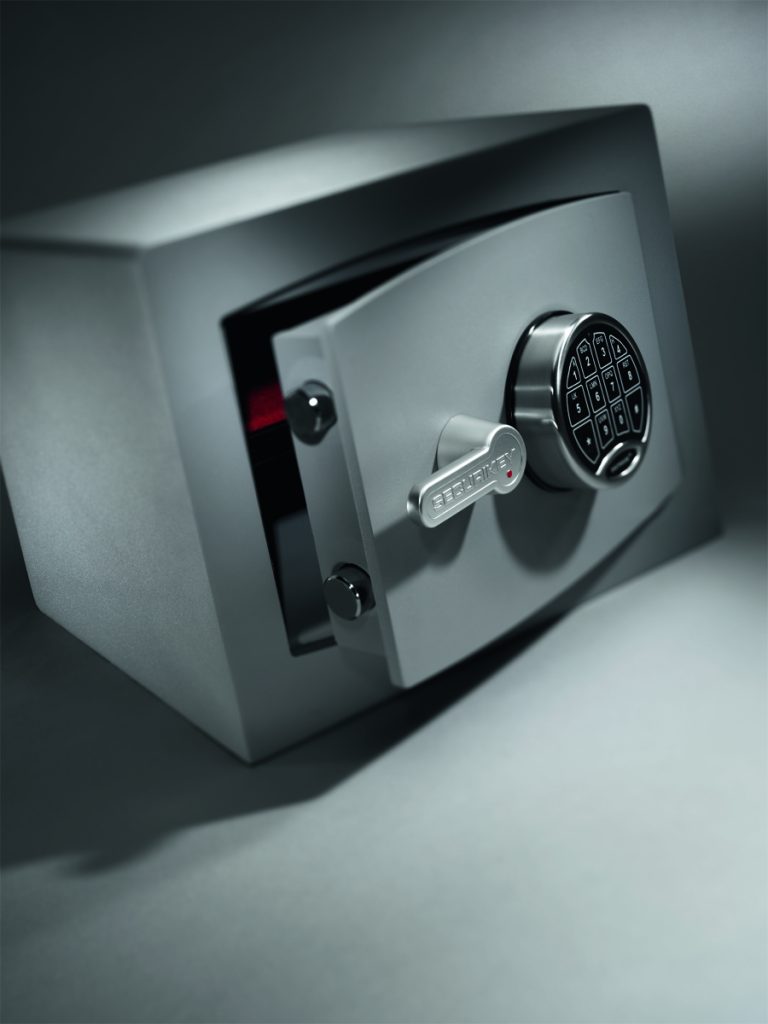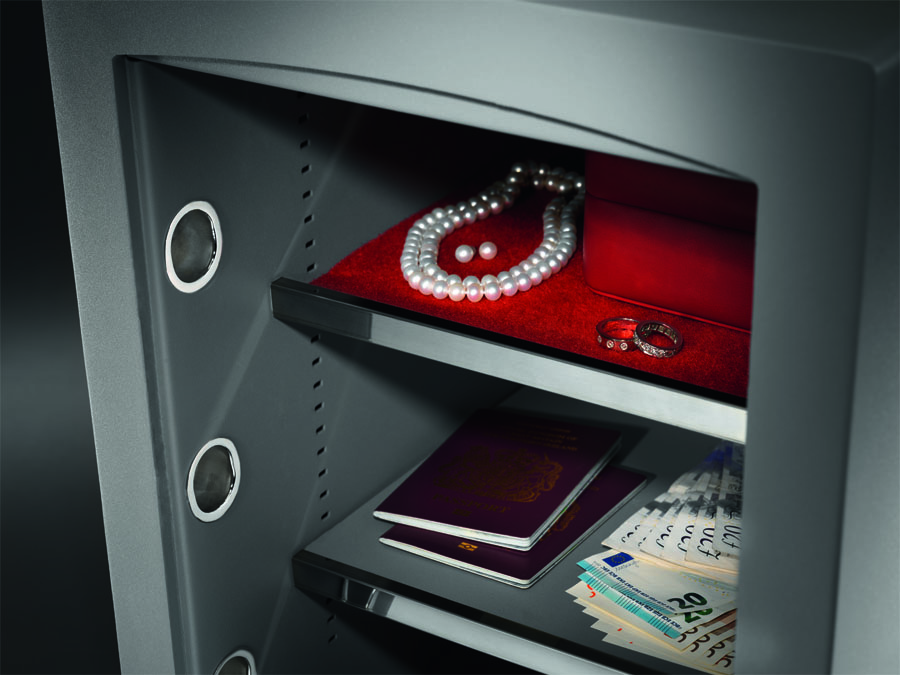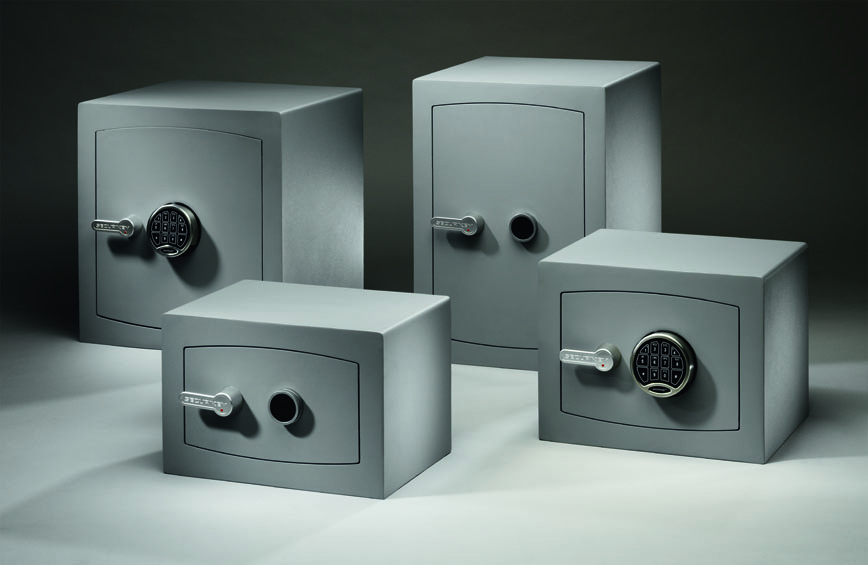By Jeremy Cassady, Managing Director at Securikey
Jeremy Cassady, Managing Director at Securikey, discusses some of the distinguishing features of a safe that will offer customers enhanced levels of security for their possessions.
Buying a safe can be an especially daunting purchase for not just a first time buyer, but a seasoned buyer as well. Depending on your customer’s requirements, budget and space availability, a number of factors need to be kept in mind when advising on this very important purchase. Buying the incorrect safe can negatively impact a customer in the short run by resulting in loss of cash, valuable items and irreplaceable documents such as passports, birth certificates, wills and insurance papers and, in the long run, leave them with a product that does not cater to their needs. A poor quality safe can also be time consuming to install and offer limited installation options. To help you, we have compiled a clear and concise list of important features to look for in a safe depending on your customers’ requirements.
Fire proof security
Safes are always used to store precious items. Some customers may wish to store away important documents while others will be more interested in storing things like jewellery, family heirlooms or even photographs which hold special emotional value. Though all safes may provide a degree of security, not all safes guarantee users protection against elements like fire which can destroy items inside. That is why it is important to source a safe which offers at least a basic level of security against the threat of fire. Most renowned brands, like Securikey, will ensure that they either offer heavy duty models able to withstand temperatures of up to 950°C for an hour, which meet European legislation standards and are clearly labelled to show proof that they have been independently tested and certified to meet the stringent criteria stated, or safes which benefit from a doubled wall construction with a fire resistant barrier material to DIN 4102 to offer users fire protection.
Anchoring the safe
Safes are ideally fitted in places that restrict access to the sides and top while ensuring that the door can be easily opened when required by the authorised user. Some safes only provide two basic fixings to anchor a safe to a wall or floor, but safes with four fixings ensure greater security by providing a tight grip against a wide variety of materials that the safe’s surroundings may consist of. Good quality safes should also provide commonly used complementary anchor fixings that are perfectly tailored to their safes. With today’s building types it is vital to get a sound fixing as walls are often only studded constructions and using the maximum amount of support is preferred.
Being the master of your own lock
 One of the most important aspects to discuss with your customer is the locking system of a safe. All safes are fitted with a key-lock as standard, a mechanical combination or a more advanced digital locking system. The electronic digital lock works by allowing users to select a unique code to lock and unlock their safes. This offers users extra security against thieves, but can sometimes pose a hurdle for the users themselves. A common problem faced by many users is misplacing or forgetting their unique pin number; this can be overridden with a predetermined master code. As an industry standard, most companies have a series of set master codes that are used to override locks. For security enhancement purposes end users can change these codes, but are often unaware of it as they have purchased safes for DIY installations over the internet. Hence, there clearly is a potential to risk the security of these safes, should those unchanged standard set codes get into the wrong hands.
One of the most important aspects to discuss with your customer is the locking system of a safe. All safes are fitted with a key-lock as standard, a mechanical combination or a more advanced digital locking system. The electronic digital lock works by allowing users to select a unique code to lock and unlock their safes. This offers users extra security against thieves, but can sometimes pose a hurdle for the users themselves. A common problem faced by many users is misplacing or forgetting their unique pin number; this can be overridden with a predetermined master code. As an industry standard, most companies have a series of set master codes that are used to override locks. For security enhancement purposes end users can change these codes, but are often unaware of it as they have purchased safes for DIY installations over the internet. Hence, there clearly is a potential to risk the security of these safes, should those unchanged standard set codes get into the wrong hands.
Companies now are paying heed to this issue and coming up with suitable solutions. To combat this exact problem, Securikey has introduced a new system with our Mini Vault Gen. 5 range. Each lock comes with a unique code held by Securikey (this is different from the code the users sets themselves to access their safe). If a user forgets or misplaces their pin number, they can call Securikey and after passing a series of security questions, will receive that a unique code, only applicable to their safe, which will override the safe’s digital lock. Having a unique code to override digital locks for every safe will eradicate the problem faced with standard codes, and make access to a safe as secure as possible. Presenting this option to your customer will allow them to make a more informed decision.
Better certified than sorry
 Though all safes are fitted with some kind of a lock on them, it is important to note that not all those locks are up to the job. By ensuring that a safe has a lock which has EN 1300 Certification and the safe has an AIS Approval, you can be assured it is of a good quality.
Though all safes are fitted with some kind of a lock on them, it is important to note that not all those locks are up to the job. By ensuring that a safe has a lock which has EN 1300 Certification and the safe has an AIS Approval, you can be assured it is of a good quality.
As a further measure of the quality of a safe, look for those that are accredited under the Secured by Design scheme. Secured by Design is a group of national police projects which acknowledges the quality security of products and crime prevention projects. They support the principles of ‘designing out crime’ through physical security and processes. An additional seal of approval from Secured by Design means that a safe has been tested to security standards in response to trends in crime.
Another important consideration is to look at the testing a safe goes through. To assure users of their credibility some manufacturers choose to take part in random annual testing of their safes instead of only planned for testing. This ensures that the quality of every safe that they produce meets rigorous quality standards, and this is highlighted by products bearing all correct testing and warranty badges. Securikey’s Mini Vault Gen. 5 range not only adheres to these certifications and works in conjunction with Secured by Design but also regularly takes part in random testing and displays appropriate testing and warranty badges.
Walls of steel
One of the most basic yet fundamental features of a safe is the walls. The material that a safe has been constructed with greatly changes the level of security that it is going to provide for a user. To cut costs so that a safe can be offered for a lower price in the market, some manufacturers offer safes constructed with thin, subpar materials which are folded to look thicker. These materials may look strong, but provide thieves with an easy way into safes. Your customer needs to be guided to check that any safe that they are buying has an 8mm steel door at the very least and at the bare minimum either a 4mm or a 6mm double-sided steel body to ensure that it will be able to provide a superior level of security when installed.
There are no hard and fast rules as to which features a buyer needs to focus on the most, but they should all be kept in mind according to unique requirements when you are helping them make this decision. If you have any questions regarding which safe fulfils your customers’ requirements, we’re always happy to provide you with expert guidance. Simply send an email to enquiries@securikey.co.uk or call 01252311888.
Securikey is a leading UK supplier of safety and security products, with a pedigree dating back nearly 40 years, and has recently launched the Mini Vault Generation 5 range of exceptionally high quality vault solutions. The range offers solutions for a wide variety of requirements.

